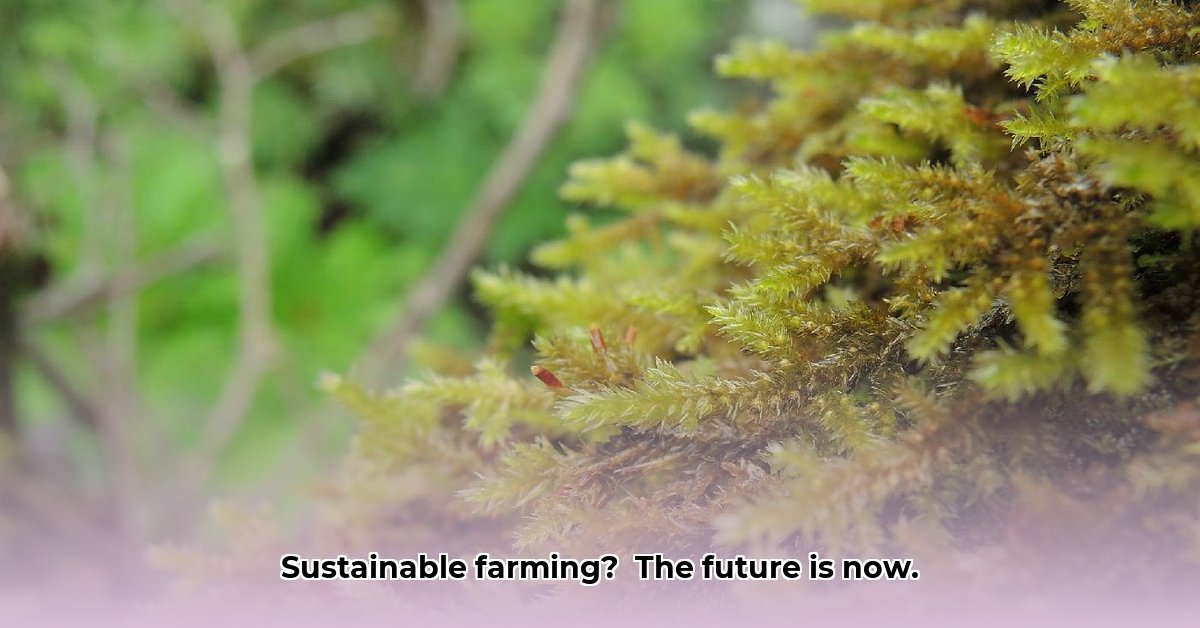
Alsia californica: A Novel Approach to Sustainable Agriculture
Alsia californica, a California native moss, presents intriguing opportunities for sustainable agriculture. While its potential remains largely unexplored, preliminary findings suggest several promising applications. This article explores these possibilities, identifies critical research gaps, and outlines actionable steps for stakeholders to unlock Alsia's potential in creating a more environmentally friendly and productive agricultural system.
Alsia's Potential Applications in Sustainable Agriculture
Alsia californica exhibits characteristics that suggest several potential uses in sustainable farming practices:
1. Bioremediation: Alsia may possess the ability to absorb and break down harmful pollutants in the soil, thereby facilitating the remediation of contaminated land. Further research is necessary to quantify this effect and identify the specific pollutants it effectively targets. This natural approach could significantly reduce the need for chemically intensive soil remediation techniques.
2. Soil Improvement: Alsia's growth habit could potentially improve soil structure by enhancing aeration and water retention. This could lead to healthier root systems and more efficient water use, ultimately resulting in increased crop yields. Rigorous field trials are needed to confirm this soil-enhancing effect across diverse soil types and climatic conditions.
3. Natural Mulch: Alsia could serve as a sustainable alternative to synthetic mulches. Its decomposition could enrich the soil with organic matter, reducing the need for chemical fertilizers. Comparative studies are essential to determine its efficacy as a mulch relative to existing materials, considering factors such as weed suppression, moisture retention, and longevity.
4. Biopesticides: The possibility that Alsia harbors bioactive compounds with pest-control properties presents a significant opportunity for the development of environmentally sound alternatives to chemical pesticides. Thorough investigations are needed to identify, isolate, and test such compounds for efficacy and safety.
Critical Research Gaps and Necessary Studies
To fully realize Alsia's potential, a multi-phased research program is imperative. This program should encompass:
Phase 1: Laboratory Investigations:
- Chemical Analysis: Conduct a comprehensive analysis of Alsia's chemical composition, focusing on identifying potential bioactive compounds and assessing its nutrient content and water-holding capacity.
- Pollutant Uptake Studies: Quantify Alsia's ability to absorb various pollutants under controlled laboratory conditions, focusing on both the rate and capacity of absorption.
Phase 2: Field Trials:
- Bioremediation Trials: Conduct large-scale field trials to evaluate Alsia's effectiveness in remediating different types of soil contamination under diverse environmental conditions.
- Soil Health Assessments: Evaluate the impact of Alsia on soil structure, water infiltration, nutrient availability, and overall soil microbial community health.
- Mulch Efficacy Trials: Compare Alsia's performance as a mulch to standard mulching materials, taking into account weed suppression, moisture retention, soil temperature regulation, and degradation rates.
- Biopesticide Efficacy Trials: Assess the effectiveness of any identified bioactive compounds in controlling various pests in field settings, ensuring comprehensive safety assessments.
Phase 3: Scalability and Sustainability Assessments:
- Cultivation Optimization: Investigate efficient and cost-effective methods for large-scale cultivation of Alsia.
- Environmental Impact Assessment: Conduct a thorough environmental impact assessment to evaluate Alsia's potential invasiveness, its effects on biodiversity, and any potential risks to human health.
Stakeholder Actions: A Collaborative Approach
Realizing Alsia's potential requires a concerted effort from various stakeholders:
| Stakeholder Group | Short-Term Actions | Long-Term Actions |
|---|---|---|
| Researchers | Secure funding; conduct preliminary lab and small-scale field trials; publish findings. | Conduct large-scale field trials; develop best practices for Alsia cultivation and application; disseminate research findings widely. |
| Funding Agencies | Prioritize funding for Alsia research projects in sustainable agriculture. | Support long-term research and monitor long-term environmental and economic impacts. |
| Farmers/Growers | Participate in pilot studies; adopt Alsia-based practices if proven effective. | Implement Alsia-based solutions sustainably, providing valuable feedback on efficacy and practical application. |
| Environmental NGOs | Advocate for research and responsible implementation of Alsia-based solutions. | Monitor environmental effects and promote responsible implementation strategies. |
Regulatory Considerations: Navigating the Path to Adoption
Before widespread adoption, Alsia's use will need to comply with relevant regulatory frameworks. This involves navigating regulations concerning the introduction of novel organisms into agricultural systems, potential biopesticide registration, and compliance with sustainable agricultural guidelines. Proactive engagement with regulatory bodies is essential to streamline the approval process.
Conclusion: A Promising Path Forward
Alsia californica presents a promising avenue for sustainable agriculture. While significant research is necessary to validate its potential, the initial findings are encouraging. By fostering collaboration among researchers, funding agencies, farmers, and NGOs, while also addressing regulatory requirements, we can unlock Alsia's potential to transform agricultural practices, ultimately contributing to a more sustainable and environmentally responsible food system. The journey ahead requires dedication, but the potential rewards for our planet and its future are substantial.